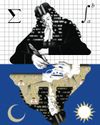
The revelation that ChatGPT, the astonishing artificial-intelligence chatbot, had been trained on an Nvidia supercomputer spurred one of the largest single-day gains in stock-market history. When the Nasdaq opened on May 25, 2023, Nvidia's value increased by about two hundred billion dollars. A few months earlier, Jensen Huang, Nvidia's C.E.O., had informed investors that Nvidia had sold similar supercomputers to fifty of America's hundred largest companies. By the close of trading, Nvidia was the sixth most valuable corporation on earth, worth more than Walmart and ExxonMobil combined. Huang's business position can be compared to that of Samuel Brannan, the celebrated vender of prospecting supplies in San Francisco in the late eighteen-forties. "There's a war going on out there in A.I., and Nvidia is the only arms dealer,"one Wall Street analyst said.
Huang is a patient monopolist. He drafted the paperwork for Nvidia with two other people at a Denny's restaurant in San Jose, California, in 1993, and has run it ever since. At sixty, he is sarcastic and self-deprecating, with a Teddy-bear face and wispy gray hair. Nvidia's main product is its graphics-processing unit, a circuit board with a powerful microchip at its core. In the beginning, Nvidia sold these G.P.U.s to video gamers, but in 2006 Huang began marketing them to the supercomputing community as well. Then, in 2013, on the basis of promising research from the academic computer-science community, Huang bet Nvidia's future on artificial intelligence. A.I. had disappointed investors for decades, and Bryan Catanzaro, Nvidia's lead deep-learning researcher at the time, had doubts. "I didn't want him to fall into the same trap that the A.I. industry has had in the past," Catanzaro told me. "But, ten years plus down the road, he was right."
This story is from the {{IssueName}} edition of {{MagazineName}}.
Start your 7-day Magzter GOLD free trial to access thousands of curated premium stories, and 9,000+ magazines and newspapers.
Already a subscriber ? Sign In
This story is from the {{IssueName}} edition of {{MagazineName}}.
Start your 7-day Magzter GOLD free trial to access thousands of curated premium stories, and 9,000+ magazines and newspapers.
Already a subscriber? Sign In

MEAN TIME
“Hard Truths.”

ENLIGHTEN ME
The secret beauty of mandalas.

THE BEST OF THEM
His was a genius for the ages. Will Gottfried Leibniz ever get his due?

DEATH CULT
Yukio Mishima’ tortured obsessions were his making—and his unmaking.

Prophecy
The night of Dev’s twenty-second birthday, he was invited to sit with the elders after dinner.

A TALE OF TWO DISTRICTS
Lauren Boebert and Colorado’s red-blue divide.

THE TIKTOK TRAIL
Andean migrants draw others to the U.S. with videos depicting themselves as living the American Dream.

LOVE AND THEFT
Did a best-selling romantasy novelist steal another writer's story?

OUR NEW TWO-FACTOR AUTHENTICATION SYSTEM
Our two-factor authentication system is expanding because text messages and e-mailed codes are becoming less secure. Also, we’re committed to making sure your log-in process is more of a hassle than it needs to be.

STILL PROCESSING
Why is the American diet so deadly?